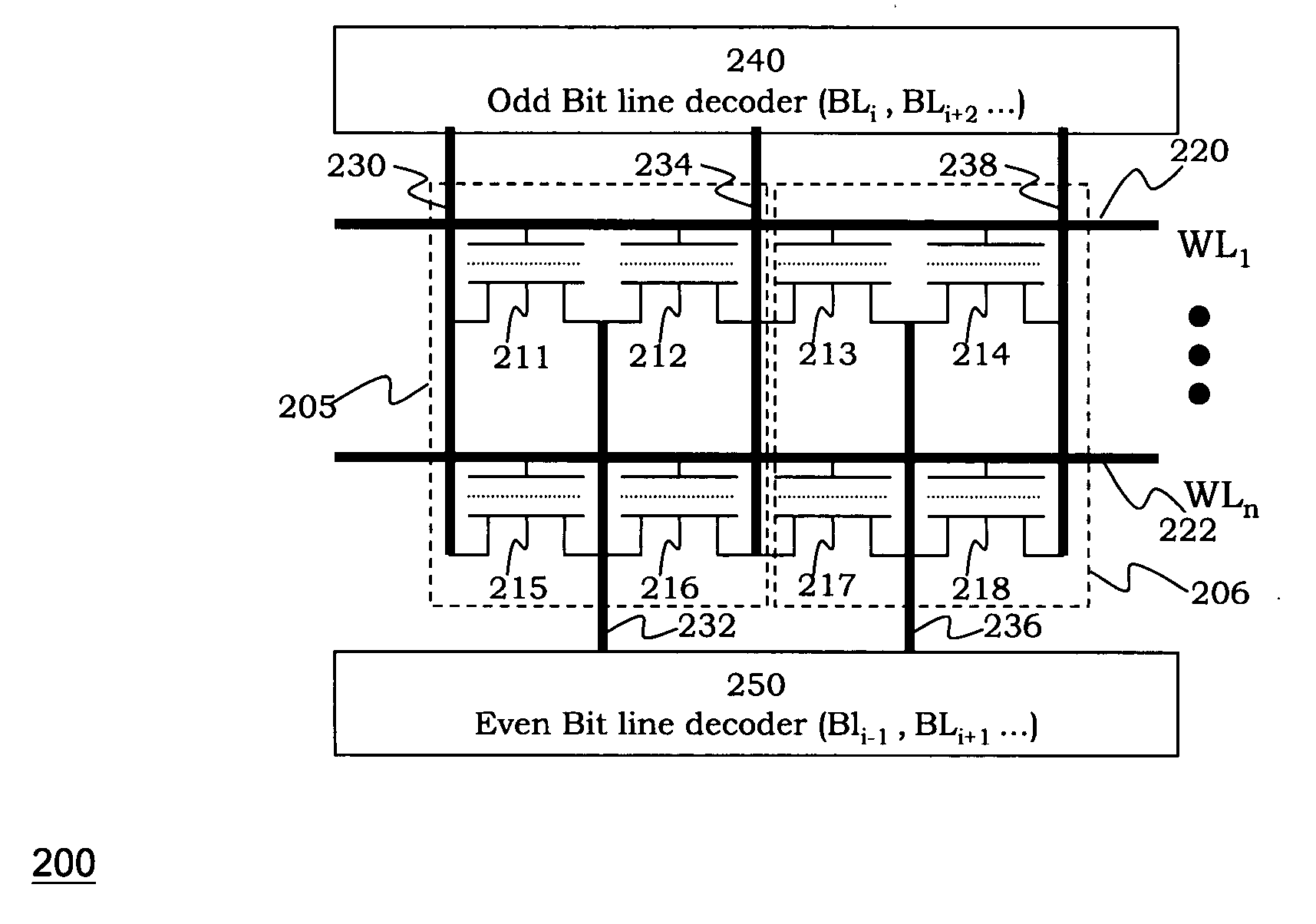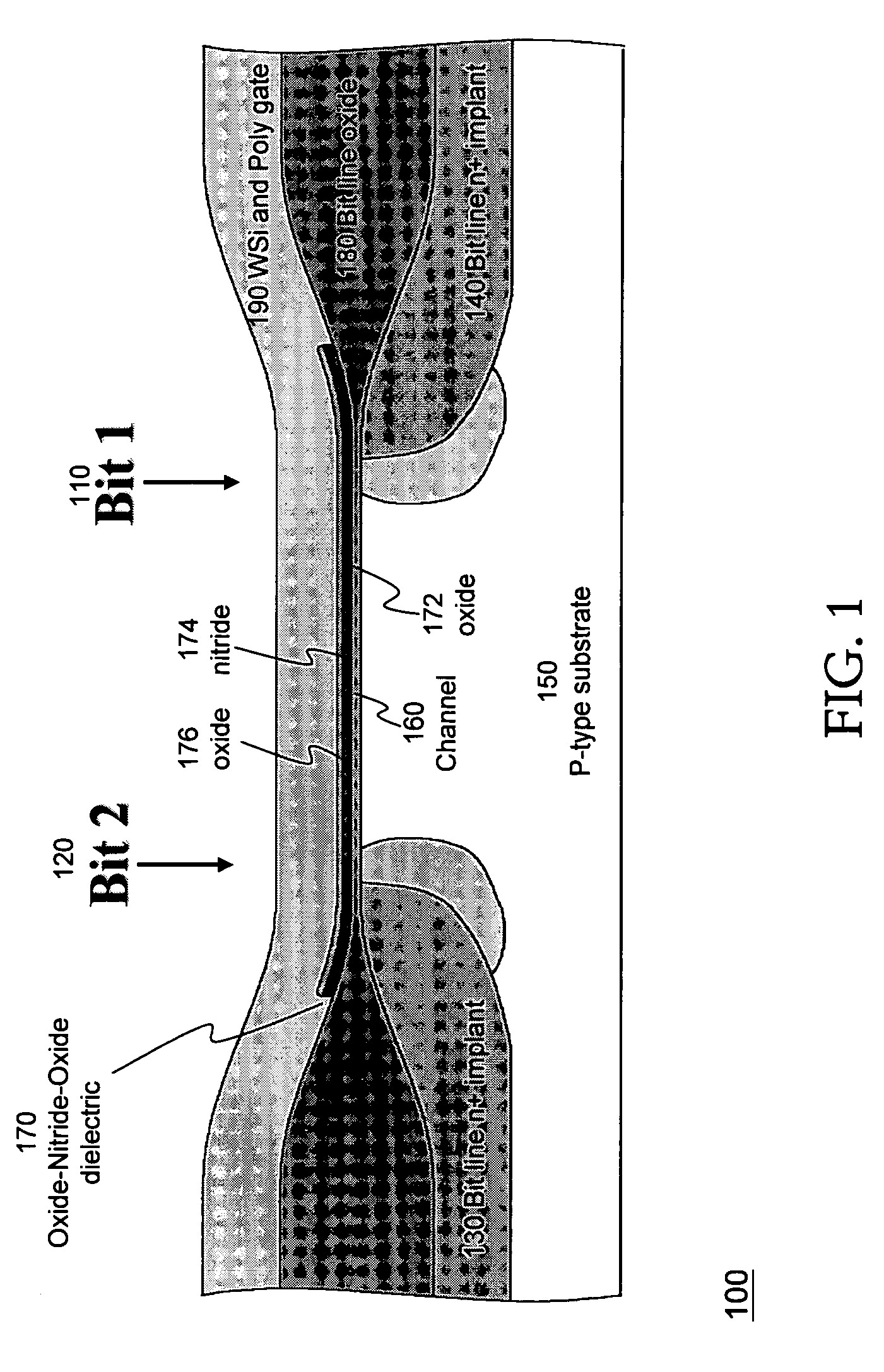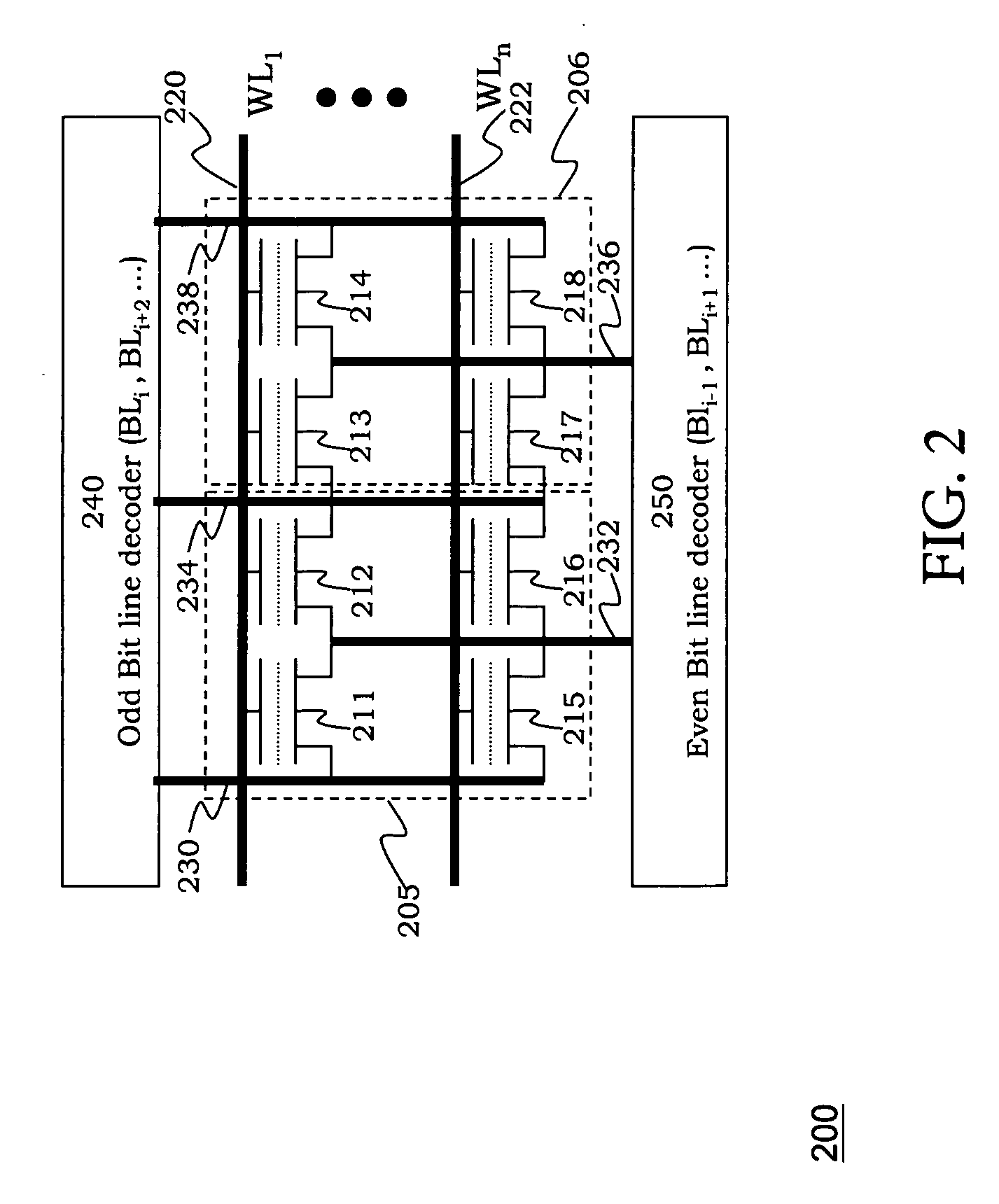Hole annealing methods of non-volatile memory cells
a non-volatile memory and annealing method technology, applied in static storage, digital storage, instruments, etc., can solve the problems of large vt distribution of erase state, difficult to erase, and high threshold cell charge loss, so as to and reduce the amount of threshold voltage
- Summary
- Abstract
- Description
- Claims
- Application Information
AI Technical Summary
Benefits of technology
Problems solved by technology
Method used
Image
Examples
first embodiment
[0043] In FIG. 9, there is shown a flow diagram illustrating the hole annealing process 900 for alleviating the threshold voltage Vt from drifting substantially higher after erasing nitride storage memory cells. Prior to erasing, the voltage distribution of the nitride memory cells is approximately equal to the high threshold voltage Vt. At step 910, the memory cells undergo a complete erase using a junction edge hot hole erase operation or band-to-band tunneling erase, where the gate voltage Vg is set to a negative bias, the substrate voltage Vsub is set to approximately 0 volt, the odd (or even) bit lines are connected to a positive bias, and the even (or odd) lines are connected to some fixed bias, e.g. 0 to 2 volts, or keep the lines floating. At step 920, the erase verification is conducted to check the bits in the nitride memory cells have been erased by determining if each nitride memory bit has reached a presetting threshold voltage, EV. After all nitride memory bits in an e...
second embodiment
[0046] Referring now to FIG. 11, there is shown a flow diagram illustrating the hole annealing process 1100 with an over-anneal check to alleviate the threshold voltage Vt from drifting substantially higher after erase of nitride storage memory cells. Although a weak hot electron program after erase compensates for trapped holes in the bottom silicon dioxide layer 630, a nitride memory bit may actually become over-anneal such that the threshold voltage of the nitride memory bit after soft hot annealing is too high. It is desirable to maintain a margin of the threshold voltage between a read operation voltage verses an erase verification level voltage. Additional steps to verify for hole over-annealing above a certain threshold, e.g. EV+Y are implemented. The symbol Y denotes another wordline voltage delta that represents the amount of voltage increase from the erase verification EV which would indicate an over-anneal of a nitride memory cell. For example, the wordline voltage delta ...
third embodiment
[0048]FIG. 13 is a flow diagram illustrating the hole annealing process 1300 with an over-anneal check to alleviate the threshold voltage Vt from drifting substantially higher after erase of nitride storage memory cells. After checking for over-annealing of EV+Y, the process 1300 at step 1310 erases the block to a voltage level equal to or below the EV level. At this juncture, the process 1300 loops back to step 930 to verify once again if the nitride memory block, which has just been erased to equal to or below EV level, is not greater than EV−X level.
PUM
 Login to View More
Login to View More Abstract
Description
Claims
Application Information
 Login to View More
Login to View More - R&D
- Intellectual Property
- Life Sciences
- Materials
- Tech Scout
- Unparalleled Data Quality
- Higher Quality Content
- 60% Fewer Hallucinations
Browse by: Latest US Patents, China's latest patents, Technical Efficacy Thesaurus, Application Domain, Technology Topic, Popular Technical Reports.
© 2025 PatSnap. All rights reserved.Legal|Privacy policy|Modern Slavery Act Transparency Statement|Sitemap|About US| Contact US: help@patsnap.com



